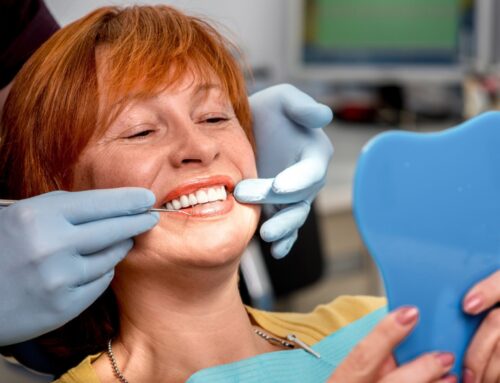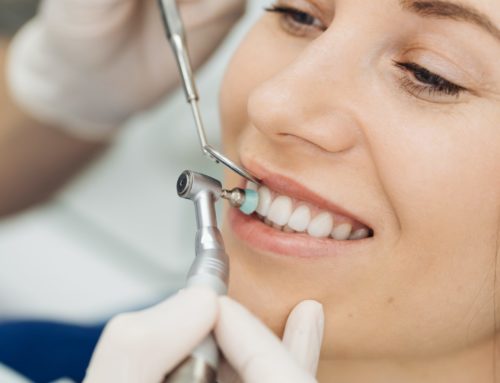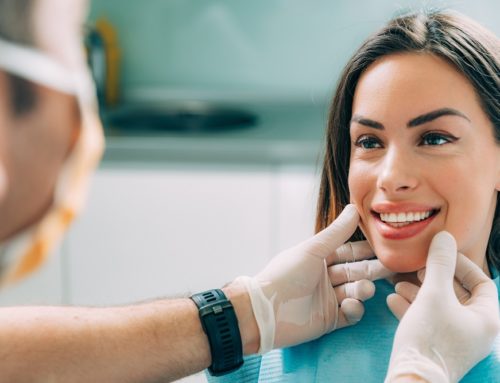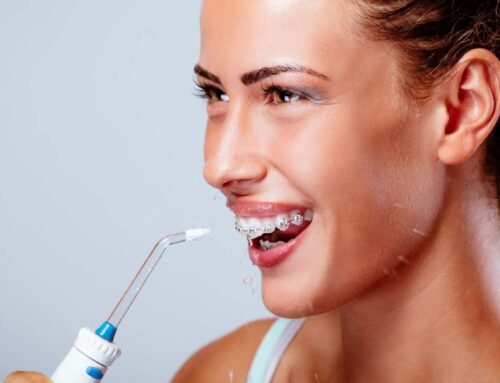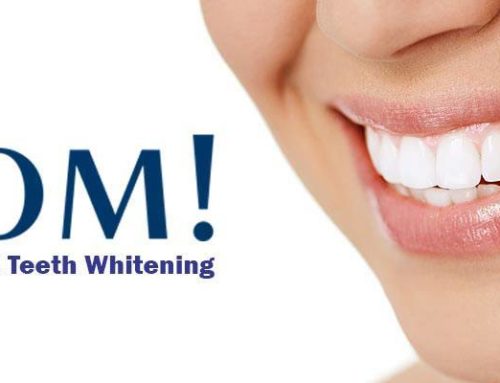Avoid Common Causes of Tooth Staining for a Whiter Smile
Over time it’s not unusual for teeth to start to gradually lose their natural bright white hue, but how and why does this even happen? There could be many reasons why stains may be appearing on your teeth, however there are simple things you can do to minimize staining and restore tooth whiteness.
A quick scan down any tooth care aisle at your local supermarket or pharmacy will make it rather obvious that tooth whitening products are incredibly popular here in Canada. There are gels, strips, and whitening toothpastes available from dozens of different brands, all designed to keep our teeth looking bright and white. But, why do our teeth get stained in the first place? While some reasons are fairly obvious, others are a bit less common, and may surprise you.
Let’s start off by explaining how and why teeth can get stained. Then, we’ll move on to explore some of the many common reasons, as well as some not-so-common reasons, why we may find ourselves with stained or discoloured teeth. Finally, we’ll talk about some of the most effective ways to prevent staining, and how a trip to the dentist office for a whitening treatment can dramatically refresh the look of our smiles.
Why Does Tooth Enamel Get Stained?
Tooth enamel is an amazingly hard substance. It is one of the main reasons our teeth are so durable and resilient to damage. However, even though the surfaces of our teeth look incredibly smooth to the naked eye, a closer look at tooth enamel under an electron-microscope will reveal a very different picture.
Tooth enamel is actually made from a tightly-woven arrangement of microscopic crystals. The surface of a tooth actually has many tiny pores and grooves on it, which can allow bacteria and stain-causing particles to grab hold and adhere to the teeth. Over time, if not dealt with effectively, these particles and bacteria begin to build up, creating noticeable staining on the teeth and leading to other types of dental issues such as the plaque and tartar that cause tooth decay.
Because the natural color of teeth is a bright white, even light staining can be rather noticeable. Depending on the dental care habits of the individual, dietary factors such as specific foods and drinks, as well as lifestyle considerations such as smoking and tobacco use, some people may notice significantly more rapid and severe staining of their teeth than others.
What Foods and Drinks Can Stain Teeth?
Here’s a good adage that you can use to remind yourself about the possibility of tooth stains from different types of foods and drinks: If whatever you’re eating or drinking could leave a stain on your shirt, it could stain the enamel on your teeth.
This applies to a wide variety of foods and drinks, but the most likely and common culprits are things like coffee, tea, red wine, foods with potent spices like turmeric, dark sauces, and anything else that may have a strong colouring or pigment in it. Certain types of colourful fruits can also leave stains, as can dyed sugary drinks like dark fruit punch, for example.
However, just because you want to keep your teeth white it doesn’t have to mean swearing off of some of your favourite foods forever. The ‘everything in moderation’ approach is a sensible way to minimize the potential for tooth staining, and if you are attentive to swishing & rinsing your mouth with water after consuming foods like these, you can significantly reduce the amount of staining that may occur as a result.
What Are Some Other Things That Can Stain Teeth?
Of course, foods and drinks aren’t the only reasons that teeth may lose their bright white hue. Improper oral care and irregular brushing and flossing habits can cause bacteria to accumulate at a faster rate, leading to plaque build-up that eventually hardens into caked-on tartar. These tartar deposits can often be varying shades of yellow in colour, making your smile look mottled and uneven.
Another common cause of tooth staining is the use of tobacco products such as cigarettes, cigars, and chewing tobacco. Even after just a short time, using tobacco causes teeth to yellow and become noticeably stained. Prolonged use can make the staining even worse, eventually progressing to darker shades of orange or even brown. Because of this, as well as the many other negative health problems caused by tobacco use, we strongly urge all smokers and tobacco users to cease using these products entirely as soon as possible.
Fortunately, even when stains do make themselves visible on your teeth, there are many options available to you that can help reduce tooth staining, and even make your teeth less prone to discolouration.
How Can I Remove Stains From My Teeth & Keep My Teeth White?
There are many simple things you can do right at home to help whiten your teeth, and keep stains from getting worse. For starters, you’ll want to try using a whitening toothpaste. These special types of toothpaste use gentle abrasive ingredients to scrub away stains from the surface of the enamel, in combination with whitening ingredients like peroxide. Peroxides such as hydrogen peroxide and carbamide peroxide are bleaching agents that lighten the colour of the stained enamel, making it appear whiter and reducing the visibility of the stain.
The effectiveness of whitening toothpastes is cumulative, which means the more consistently you use them the more noticeable the effects will be. A single tooth brushing won’t be a dramatic change, but using them regularly according to a typical tooth brushing schedule will help ward off many types of staining and keep your teeth whiter in between professional dental cleanings.
For a more dramatic reduction in visible staining and greater whitening effect, you may choose to use an over-the-counter tooth whitening kit. These gels or adhesive strips contain a similar bleaching agent to what is found in whitening toothpastes, but it is in a higher concentration. The whitening substances are applied to the teeth according to a set schedule for a certain duration, and then removed or cleaned off of the teeth per the manufacturer’s direction. While toothpastes can take several weeks to make a visible change to the appearance of your teeth, whitening gels and strips can deliver more significant results in about a week, or with some types of kits as little as one treatment.
Although whitening kits are popular and used by many people, they are still not able to achieve the same kinds of results that can be obtained from a professional tooth whitening treatment at your dentist office. The products used in a clinical whitening treatment are more potent than anything available at a retail store, and deliver faster whitening effects and a more dramatic improvement to the overall shade of all of the teeth in your smile.
For best results, your dentist will also perform a thorough cleaning and exam prior to your tooth whitening treatment. This will help ensure the bleaching agents are able to work to maximum effect. Plus, having a cleaning and exam before a whitening treatment is an opportunity for your dentist to review the entire state of your oral health and identify any potential problems from developing into more serious issues down the road.
Book Your Next Appointment to Keep Your Teeth White & Your Smile in Style
If you’ve started to notice that your teeth aren’t as bright white as you’d like them to be, or that there are some unsightly stains on your teeth you want gone, now is the time to book your next appointment at Georgian Dental. Our team will be glad to provide you with all the advice and guidance you need to make sure your smile stays fresh, white, and beautiful. Contact us today, we look forward to seeing you!
Appointment Request
If you’re interested in any of our procedures, and would like to meet with one of our dentists to discuss options, costs and get additional information, complete this short form and we’ll give you a call to arrange for a no-obligation appointment at our Barrie clinic.

